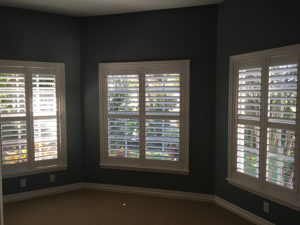
 Many homeowners first get exposed to window shutters because they seem them on the outside of an old home, or someone has added them to their contemporary living space. While exterior window shutters look great and do offer some benefits to a home, they are not really comparable to interior window shutters. Tampa residents who are interested in window shutters for their home might want to know some advantages of interior window shutters before they commit to exterior window shutters. Exterior window shutters look great on most homes and often offer a lot of contrast in terms of color for a house, but other than that interior window shutters offer more benefits than their exterior counterparts.
Many homeowners first get exposed to window shutters because they seem them on the outside of an old home, or someone has added them to their contemporary living space. While exterior window shutters look great and do offer some benefits to a home, they are not really comparable to interior window shutters. Tampa residents who are interested in window shutters for their home might want to know some advantages of interior window shutters before they commit to exterior window shutters. Exterior window shutters look great on most homes and often offer a lot of contrast in terms of color for a house, but other than that interior window shutters offer more benefits than their exterior counterparts.
Interior Window Shutters Can Be Controlled
Most people like the idea of exterior window shutters on their home because they think that it is an elegant way to stop sunlight from entering their home or because it will offer more privacy. While this is somewhat true to an extent, they do not compare to the benefits of interior window shutters. Tampa residents should know that there is no way to control or modify exterior window shutters to block out sunlight or unwanted eyes. Exterior window shutters simply rest on top of windows of a home, while interior window shutters can be controlled by their louvers and what is known as a tilt bar.
Exterior Window Shutters are Affected by Weather
Most people who see exterior window shutters love how bright they are when they are painted, but this paint can fade over time, especially with excessive weather. Additionally, the material and paint of exterior window shutters can crack or chip, but this is not a big issue for interior window shutters. Tampa residents should be made aware that since interior window shutters are on the inside of the home, they are not affected as much by moisture from humidity or rain. This ensures that elegant interior window shutters stay great for a long time to come, without the need for refinishing or painting.
*Disclaimer: The views expressed here are those of the authors and do not necessarily represent or reflect the views of Shutter Professionals*

